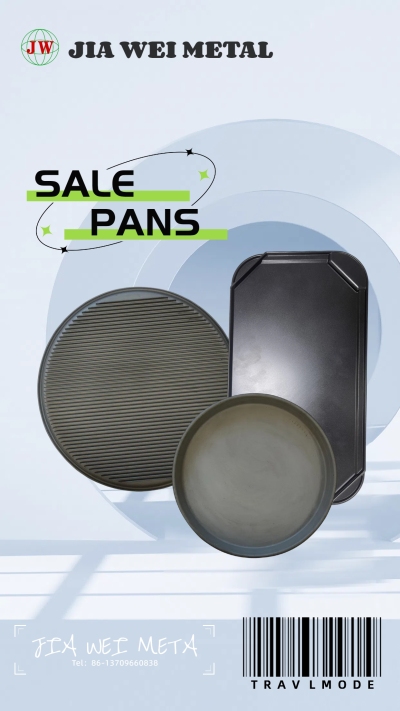
Die-Cast Components Illuminate and Elevate Lighting, Furniture, and Architectural Industries
2025-10-15 15:43
Die-Cast Components Illuminate and Elevate Lighting, Furniture, and Architectural Industries
In the worlds of lighting design, furniture manufacturing, and architectural construction, the pursuit of durability, aesthetics, and functionality has led to a quiet yet impactful innovation: die-cast components. These precision-machined parts—crafted via the die-casting process that injects molten metal into custom molds—are redefining how designers and builders create products that balance form and function. From sleek lamp bases to sturdy furniture joints and decorative architectural accents, die-cast (die-cast fittings) are becoming indispensable, driving efficiency, sustainability, and creativity across three key sectors.
Die-Cast Components: Lighting’s Blend of Style and Sturdiness
The lighting industry has long grappled with a core challenge: creating fixtures that are visually appealing yet robust enough to withstand daily use (and, for outdoor lighting, harsh weather). Die-cast components have emerged as the solution, thanks to their ability to replicate intricate designs while maintaining structural integrity.
Aluminum and zinc are the metals of choice for lighting die-cast parts. Aluminum’s lightweight properties make it ideal for ceiling fixtures and pendant lights—preventing strain on mounting hardware—while its corrosion resistance ensures longevity for outdoor lanterns and garden lights. Zinc, meanwhile, offers superior dimensional accuracy, making it perfect for small, detailed components like lamp switch housings, bulb sockets, and decorative trim pieces. For example, leading lighting brand Philips uses die-cast aluminum frames for its smart outdoor floodlights; these frames are not only 30% lighter than steel alternatives but also resist rust and fading, even after years of exposure to rain and UV rays.
Another advantage is design flexibility. The die-casting process allows for complex shapes—from geometric patterns on chandelier arms to curved bases for table lamps—that would be costly or impossible to achieve with traditional machining. This has empowered designers to experiment: Italian lighting studio Flos, for instance, used die-cast zinc components to create its iconic “Taraxacum” lamp, which features delicate, petal-like details that maintain their shape without compromising strength. As consumer demand for customizable lighting grows, die-cast parts are enabling brands to offer modular designs—such as interchangeable die-cast lamp shades—that cater to individual tastes.
Furniture: Die-Cast Parts Enhance Durability and Design Freedom
The furniture industry is no stranger to wear and tear—joints loosen, legs crack, and hardware fails over time. Die-cast components are addressing these pain points, transforming everything from office chairs to dining tables into longer-lasting, more versatile pieces.
In office furniture, die-cast aluminum brackets and hinges are revolutionizing ergonomic designs. Brands like Herman Miller use these parts in their task chairs: the die-cast brackets connect the seat to the base, supporting up to 300 pounds while allowing smooth height and tilt adjustments. Unlike plastic brackets (which can break under pressure) or welded steel (which adds unnecessary weight), die-cast aluminum offers the perfect balance of strength and lightness. For home furniture, die-cast zinc drawer pulls and cabinet knobs have become popular; their smooth, burr-free finish resists scratches, and their ability to hold intricate textures (like brushed metal or matte black coatings) aligns with modern interior design trends.
Outdoor furniture is another key area of growth. Die-cast aluminum frame components are replacing wood and plastic in patio sets, as they resist warping from humidity and won’t fade in sunlight. Companies like Brown Jordan use die-cast parts to create modular outdoor sofas—each section connects via die-cast aluminum clips, allowing users to rearrange the furniture without worrying about weak links. Even luxury furniture brands are embracing die-casting: Italian brand Poltrona Frau uses die-cast magnesium legs for its leather armchairs, combining a sleek, minimalist look with the durability to support daily use for decades.
Architecture: Die-Cast Fittings Merge Aesthetics with Structural Reliability
In architectural construction, the focus is on components that can withstand extreme conditions while contributing to a building’s visual identity. Die-cast components—particularly those made from aluminum and magnesium—are meeting this demand, appearing in everything from facades to interior decorative elements.
Externally, die-cast aluminum curtain wall brackets are a game-changer. These parts attach glass panels to a building’s frame, supporting heavy loads while ensuring a tight seal against wind and water. Unlike traditional steel brackets, die-cast aluminum brackets are lighter (reducing the building’s overall weight) and can be coated with weather-resistant finishes (like anodized aluminum) to match the building’s exterior. For example, the Burj Khalifa in Dubai uses thousands of die-cast aluminum fittings in its curtain wall system, contributing to its iconic, sleek appearance while withstanding desert heat and sandstorms.
Internally, die-cast components are adding both function and flair. Die-cast zinc handrail brackets are common in commercial buildings and luxury homes; their ability to be cast into ornate designs (from Art Deco patterns to modern geometric shapes) complements interior decor, while their strength ensures safety. In public spaces like airports and malls, die-cast aluminum signage holders are preferred for their durability—they resist dents and scratches, even in high-traffic areas.
Sustainability is another key driver in architectural die-casting. Aluminum die-cast parts are 100% recyclable, and the die-casting process generates minimal waste (scrap metal is melted and reused). This aligns with global green building standards like LEED: buildings that use die-cast components often qualify for additional sustainability credits, as they reduce reliance on non-recyclable materials like plastic or virgin steel.
Market Trends: Growth, Innovation, and Future Outlook
The global market for die-cast components in lighting, furniture, and architecture is projected to grow at a CAGR of 7.5% from 2024 to 2030, reaching $48 billion by the end of the decade, according to MarketsandMarkets. Three trends are fueling this growth:
Material Innovation: Manufacturers are developing new alloy blends—such as aluminum-magnesium-silicon (Al-Mg-Si) alloys for enhanced strength—to meet the unique needs of each sector. For example, a new zinc-aluminum alloy (ZA-27) is gaining traction in furniture, as it offers the same strength as steel but with 50% less weight.
Smart Integration: The rise of smart homes and buildings is driving demand for die-cast parts that can house sensors. Lighting brands are embedding die-cast aluminum sensor housings into fixtures (for motion-activated lights), while furniture companies are using die-cast zinc compartments in office desks to hold wireless charging modules.
Customization at Scale: Advanced die-casting mold technology—including 3D-printed molds—allows manufacturers to produce small-batch, custom die-cast parts at lower costs. This is a boon for boutique lighting designers and luxury furniture brands, which can now offer one-of-a-kind pieces without sacrificing durability.
Challenges remain, such as the high upfront cost of die-casting molds (which can range from $10,000 to $100,000 for complex designs). However, many manufacturers are addressing this by offering mold leasing programs or partnering with clients to share development costs.
Conclusion: Die-Cast Components as a Catalyst for Industry Evolution
From illuminating a living room to supporting a skyscraper, die-cast components are proving their versatility across lighting, furniture, and architecture. Their unique combination of strength, design flexibility, and sustainability is not just meeting current industry needs—it’s inspiring new possibilities. As designers and builders continue to prioritize durability and aesthetics, die-cast parts will remain at the forefront of innovation, shaping the products and spaces we interact with every day.
For businesses in these sectors, investing in die-cast components is more than a choice—it’s a strategic move to stay competitive in a market where consumers demand both style and longevity. And for consumers, it means better, longer-lasting products: a lamp that shines for years, a chair that stays comfortable, and a building that stands the test of time. In short, die-cast components are not just parts—they’re the backbone of modern design and construction.
Get the latest price? We'll respond as soon as possible(within 12 hours)












